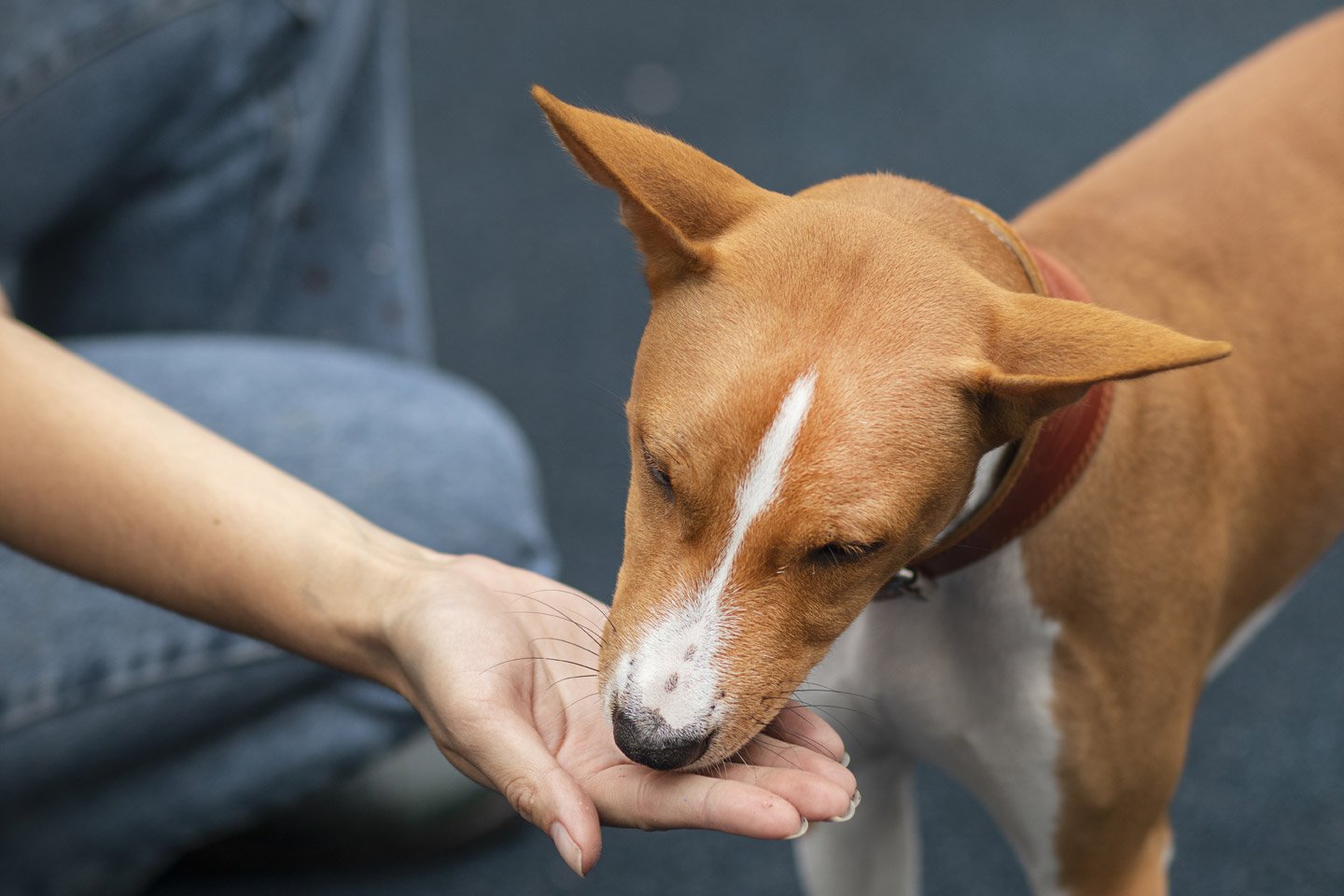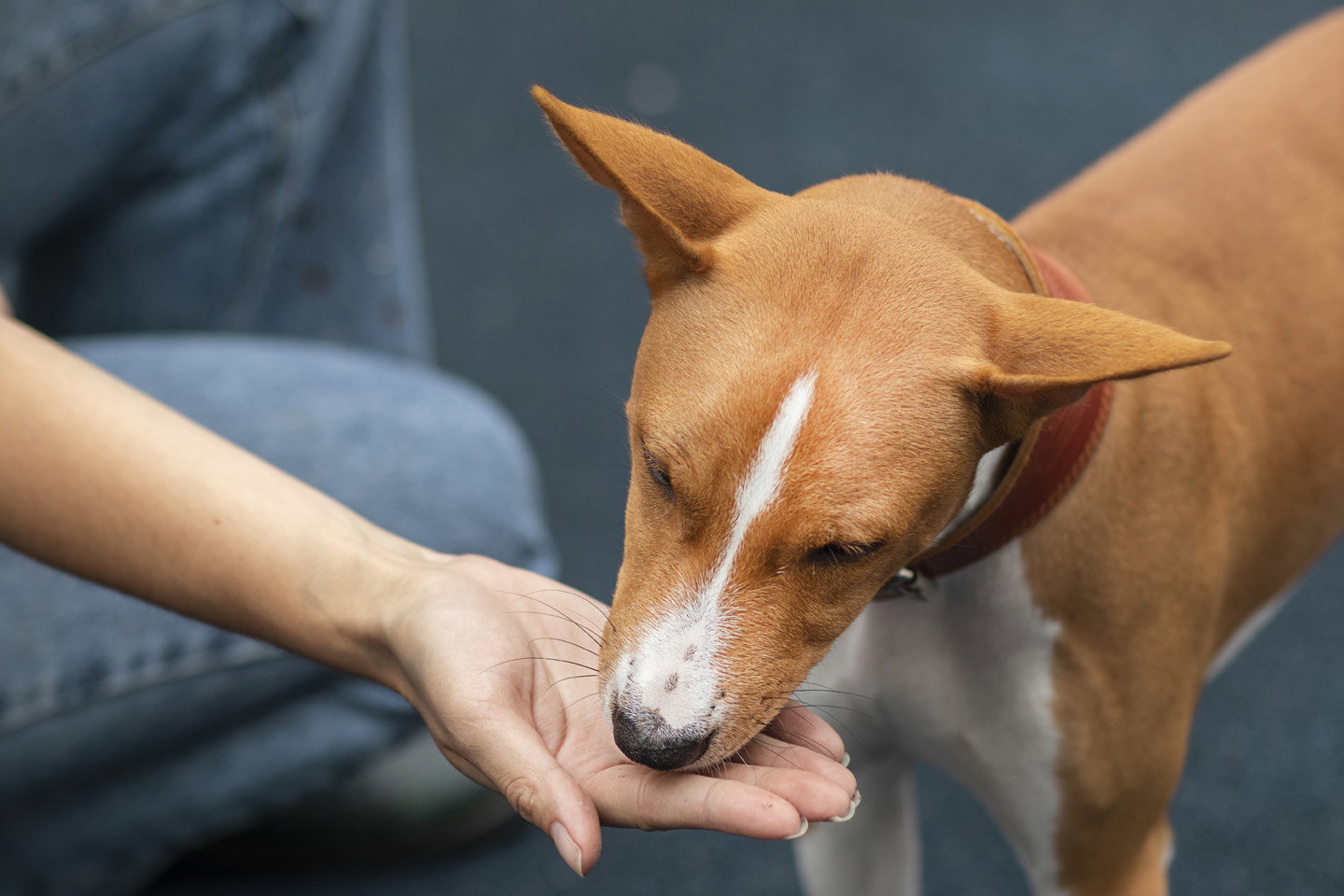

If you live with a dog, it is likely that at some point, you will be faced with the dreaded task of having to administer medication. Even some of the most cooperative dogs object to having pills shoved down their throat, and who wouldn’t? So, to disguise the pills, you carefully hide their medication in peanut butter. But of course, they figure out how to meticulously clean all the peanut butter off the pill and then leave it on the carpet for you to step on—or even worse, hide it under the couch. Many dogs initially will take pills wrapped in the infamous “American Cheese,” but eventually, they run for the hills when they hear the crinkle of the package.
Specialty compounding pharmacies are popping up to address the need for tasty ways to get meds into dogs. They offer flavored liquids and tablets, tiny capsules, transdermal creams, and even injectable meds. Some of these items can be costly, so naturally, pet parents look for other ways to medicate their pets. Commercially sold pill pockets are a popular option. But for something a little more natural and healthy, especially when your dog takes daily medications for long periods, a homemade pill pocket will do the trick.
How-To Make Homemade Pill Pockets
There are countless creative homegrown ways to get medications where they need to go. To keep your dog off guard: Vary the medicated food, change the timing of the medication (if possible), and alternate the pill “laced” foods with plain food.
Homemade pill pockets are easy to create. There’s a wide variety of foods that can become your next pill pocket. Use foods your dog really loves. Monopolize on textures of foods and chill foods for better pill holding properties. Most important, act like they are getting the best treat in the world. Have them sit, do tricks, and then hand off the medication-laden treat to your unsuspecting very happy pup.
GET THE BARK NEWSLETTER IN YOUR INBOX!
Sign up and get the answers to your questions.
Try this: Instead of scrambling an egg, make an egg patty. Then cut the patty into squares of varying sizes, so they are thick enough to slide a pill or capsule between the two layers. Most dogs don’t chew soft treats, so the whole package is likely to slide down in one quick swallow.
Other foods that make great safe homemade pill pockets:
- Warm or chilled peanut butter and jelly sandwich squares
- Chilled peanut butter balls
- Butter balls
- Cream cheese balls
- Cut pieces of hot dog
- Soft cooked pasta
- Small pieces of chicken and beef
- Melted cheese on toast
Think of other special treats your dog likes.
If necessary, double layer the food by slathering peanut butter on the food containing the pill. Change up the food item wrapper regularly to keep dogs from habituating and becoming suspicious.
When administering bitter-tasting pills, it is important to wash hands once the medicine is buried well inside the food item to avoid leaving any trace of the pill on the outside of the food pocket. Be sure to use big enough chunks of food to bury pills for very fussy dogs.
Liquid meds, powders, and tablets that are easily crushed can be hidden in meat flavored baby food, yogurt, ice cream, mashed tuna, or salmon with the “juice,” chicken and beef broth, and gravies. These concoctions will commonly be attractive enough for dogs to happily lap up their meds. A sprinkle of parmesan cheese will often be enough to divert a dog’s nose away from their worry about ingesting the medication.
What if Your Dog Still Rejects Medication?
Some dogs are just impossible and will not take oral medications under any circumstances. Alternatives include transdermal creams, which can be compounded by a specialty pharmacy. A dab of specially formulated cream containing a specified concentration of medication is applied to the inner ear flap, alternating ears with each dose. The medication is absorbed through the skin. A specialty pharmacist can also make lick doses. The medication is formulated into a very tasty ointment that can be applied to the skin on the inner thigh for the dog to lick off.
When all else fails, some medications are available in injectable form. Injections can be done at home or the vet hospital, depending on the specific meds and individual dogs.
Of course, check in with your veterinarian for the best place to start when you have questions and concerns about medicating your dog.